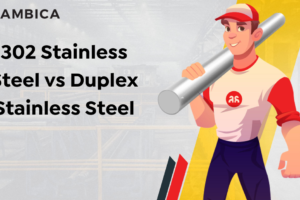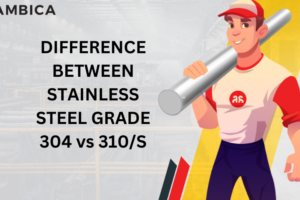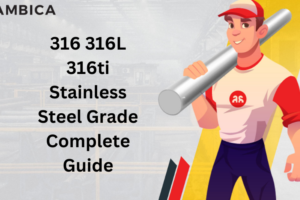Corrosion Resistance:
Type 420 is a martensitic Stainless steel and as the name suggests it stains very less as compared to other iron-based metals as stainless steel contains a heavy dose of chromium which provides stainless steel its famous corrosion resistance.
Grade 420 stainless steels are characterised by good corrosive resistance in mild atmospheric, domestic and industrial environments. The performance of this steel grade with a smooth surface finish is excellent towards corroding environment. It is resistant to ammonia, water, air, crude oil, detergent solutions, dilute nitric acid, food acids, many petroleum products, steam and vinegar etc. Grade 420 stainless steels are less corrosion resistant in annealed condition as compared to the hardened condition.
Heat Resistance:
Grade 420 stainless steels possess fair resistance to scaling up to 750°C in intermittent service and up to 675°C in continuous service. It is not recommended to use this grade in temperature above standard tempering temperature.
Heat Treatment:
Annealing:
For maximum softness Grade 420 stainless steel is annealed and the annealing process involves uniform heating from 820 to 890°C, followed by slow cooling within the furnace.
Hardening:
The hardening process of grade 420 stainless steel involves uniform heating at 960 to 980°C, followed by air or oil quenching. For heavy metal sections oil quenching is more effective.
Welding:
Due to its hardenability martensitic class of stainless steel has limited weldability. As grade 420 stainless steel has higher carbon content, special consideration is required to avoid the cold cracking by preheating from 150° to 320° C and post heating to 610 to 720 C. Whenever a weld filler is needed, AWS E/ER 420, 410 NiMo and 309L are most often specified for this martensitic grade.
Machining:
It is not easier to machine this grade in its hardened condition. However, it can be easily machined in its annealed state.
Typical Applications:
The applications which require good corrosion resistance and high hardness are ideal for this alloy. Typical uses include scissors, cutlery, shear blades, surgical and dental equipment, tapes and straight edges etc. The alloy is not generally used at temperature exceeding 427° C due its rapid softening and loss of corrosion resistance.
Properties:
Mechanical Properties: Typical mechanical properties of the grade 420 stainless steel are given below in the following table:
| Tempering Temperature (°C) | Tensile Strength (MPa) | Yield Strength 0.2% Proof (MPa) |
Elongation (% in 50mm) | Hardness Brinell (HB) | Impact Charpy V (J) |
| Annealed * | 655 | 345 | 25 | 241 max | – |
| 204 | 1600 | 1360 | 12 | 444 | 20 |
| 316 | 1580 | 1365 | 14 | 444 | 19 |
| 427 | 1620 | 1420 | 10 | 461 | # |
| 538 | 1305 | 1095 | 15 | 375 | # |
| 593 | 1035 | 810 | 18 | 302 | 22 |
| 650 | 895 | 680 | 20 | 262 | 42 |
Physical Properties: Typical physical properties of the grade 420 stainless steel in its annealed state are given below in the following table:
| Grade | Density (kg/m3) | Elastic Modulus (GPa) | Mean Coefficient of Thermal Expansion (μm/m/°C) |
Thermal Conductivity (W/m.K) |
Specific Heat 0-100°C (J/kg.K) |
Electrical Resistivity (nΩ.m) | |||
| 0-100°C | 0-315°C | 0-538°C | at 100°C | at 500°C | |||||
| 420 | 7800 | 200 | 10.3 | 10.8 | 11.7 | 24.9 | – | 460 | 550 |
Chemical Composition:
The compositional ranges of grade 420 stainless steels are given below in the following table:
| Grade | C | Mn | Si | P | S | Cr | |
| 420 | min.
max. |
0.15
– |
–
1 |
–
1 |
–
0.040 |
–
0.03 |
12.0
14.0 |
About Author
Ambesh Tyagi is a Mechanical Engineer and having 2 years of experience in Quality domain. Presently he is working with Ambica steels limited. His leisure time activities including writing blogs on Materials and Heat Treatment.




